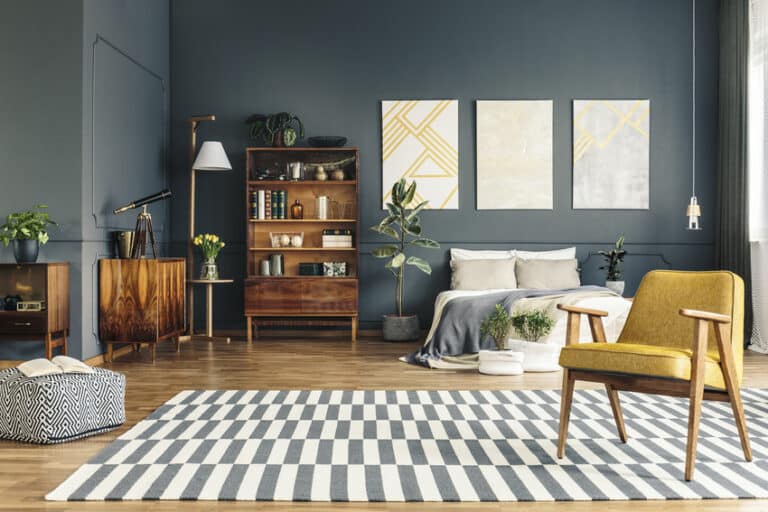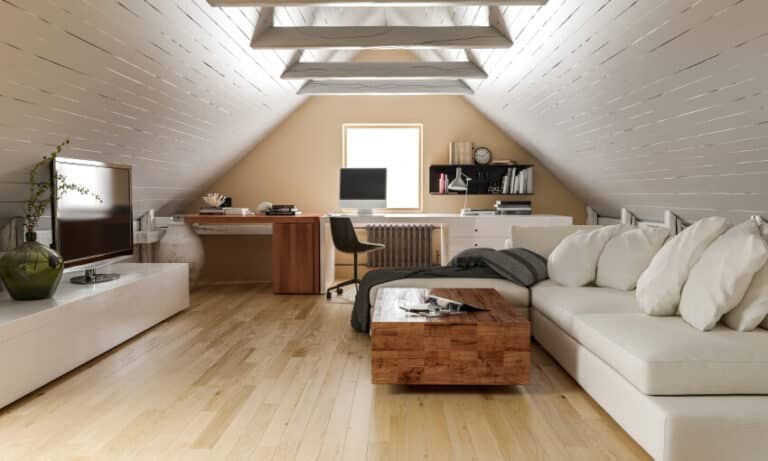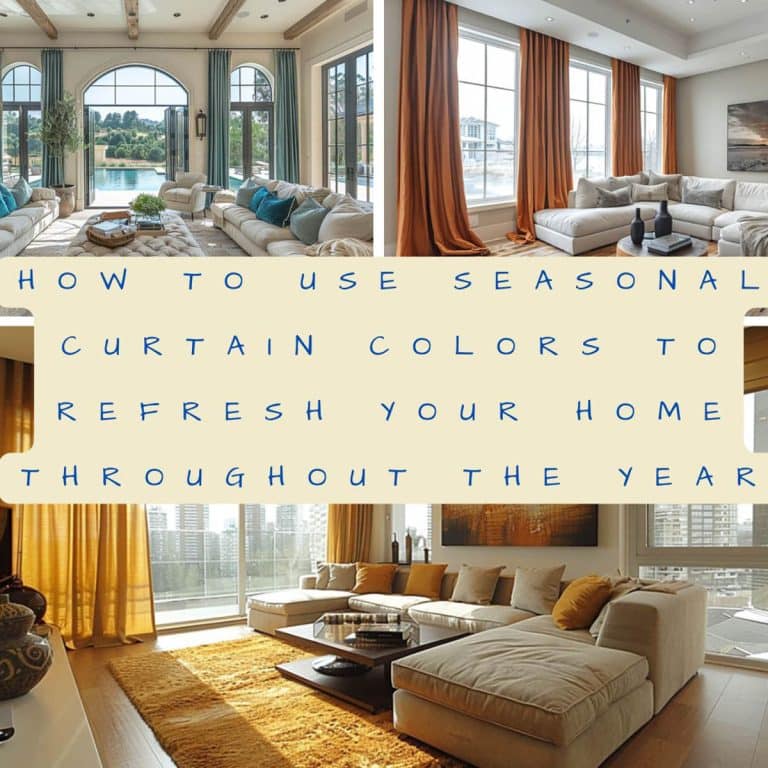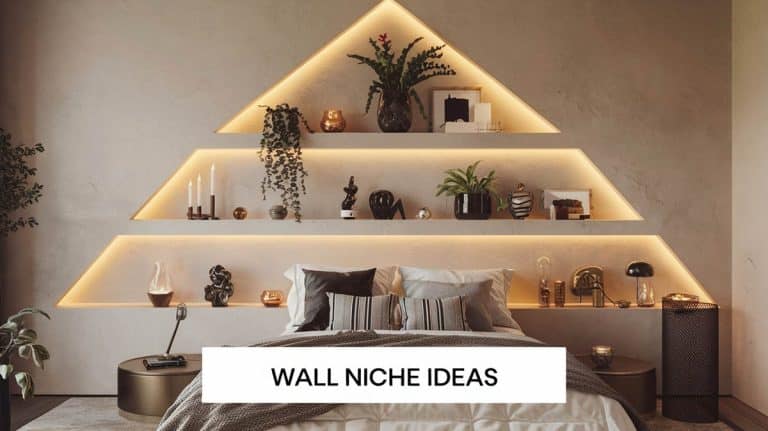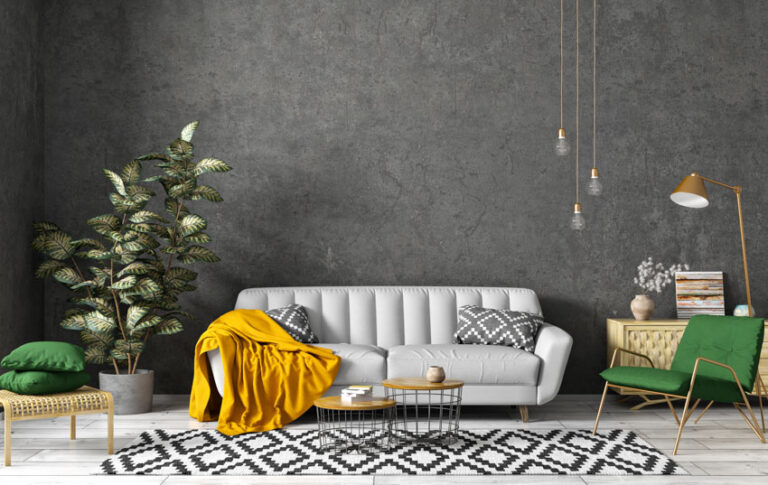25 Curtain Color Ideas For Small Rooms That Make Them Feel Bigger
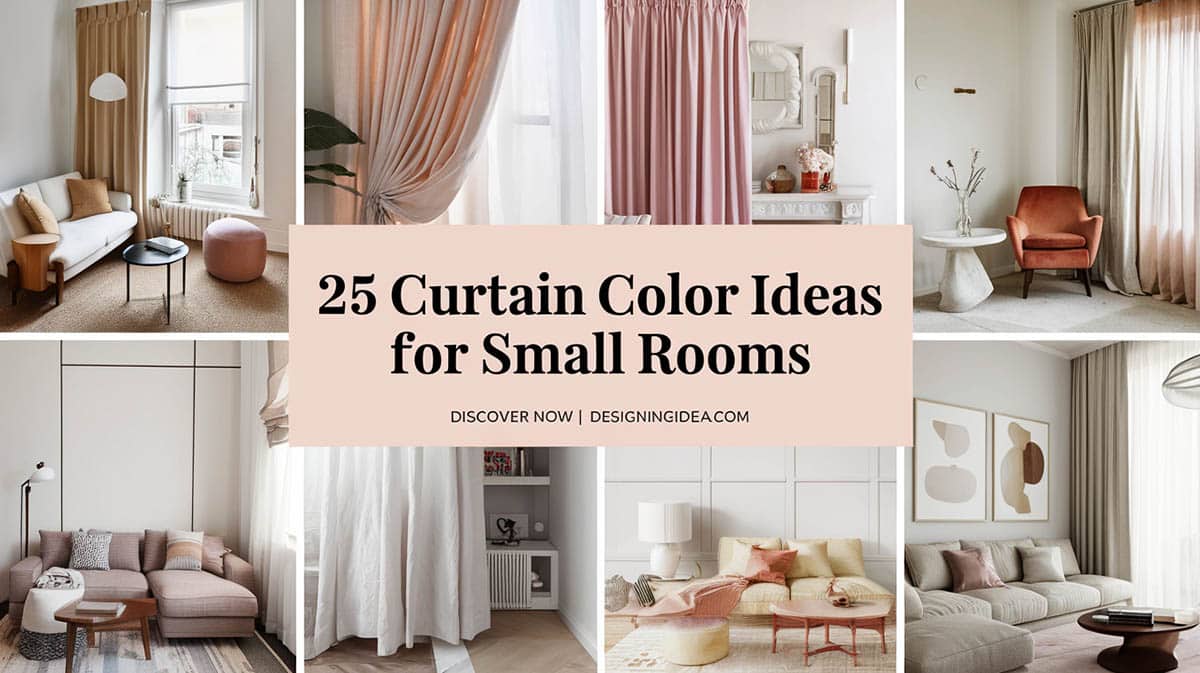
Getting the right look and feel in a small room is a challenge. You can try painting the room in lighter colors, adding more lighting, or even putting in more reflective surfaces. Yet, one of the easiest ways to instantly make a small space feel more open and inviting is by changing the hue of the window treatments. Using the right time-tested curtain color ideas for small rooms can transform the look and feel. Here’s some of our top choices.
Best Light-Enhancing Colors
The right curtain color doesn’t only increase the brightness it can help increase the illusion of a bigger space. When choosing fabrics to frame a window, go for light-enhancing colors that reflect sunlight and indoor lighting. Options like crisp whites, warm ivories, soothing neutrals and even unexpected pastels open up tight quarters.
| Curtain Color | Matching Wall Paint Colors |
|---|---|
| Crisp White | Any neutral or pastel shade |
| Ivory and Cream | Neutral tones like beige or taupe |
| Pale Gray | Cool-toned whites or light woods |
| Pastel Colors | Soft whites or light grays |
| Lavender and Light Blue | White or pastel shades |
Crisp White Curtains. You can’t go wrong with classic white. Crisp white curtains keep things airy and breezy with a clean look that pairs well with any color scheme. Timeless and versatile, white instantly freshens up small spaces.
Ivory and Cream Curtains. For a warmer yet still brightening effect, consider ivory or cream. These rich neutral tones emit a gentle glow across rooms with wood elements or neutral painted walls. The sheer fabrics let ample light filter through while adding cozy texture.
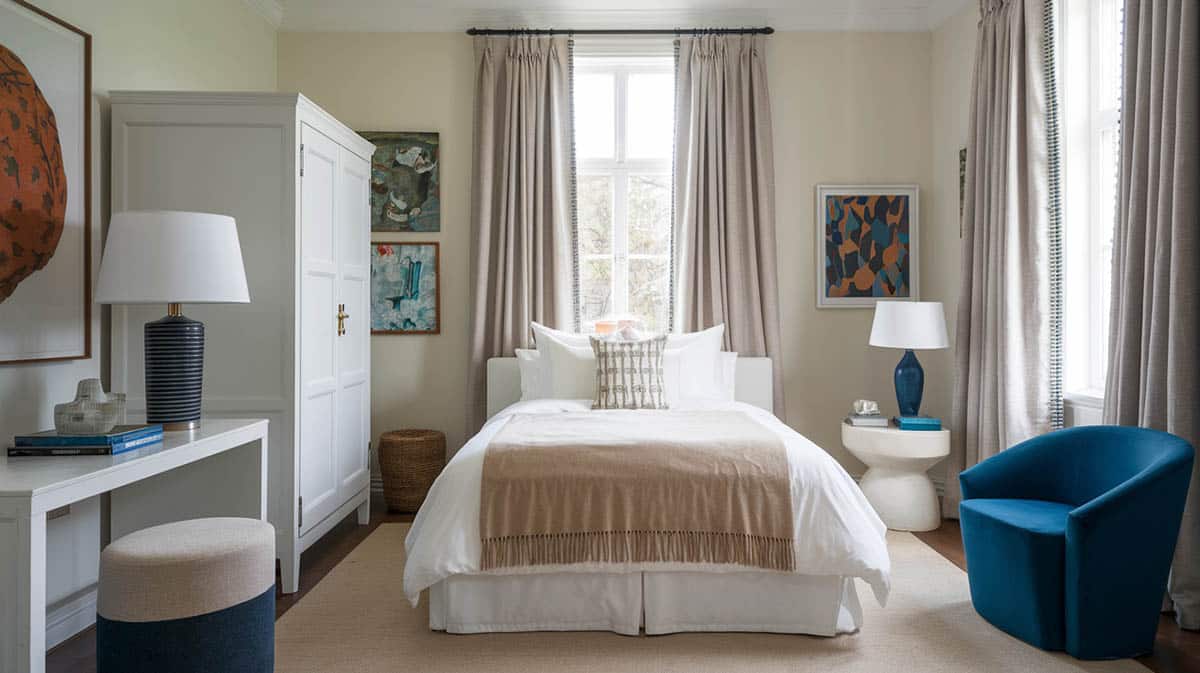
Pale Gray Curtains. On the more modern end, pale gray offers depth without darkness. Sophisticated yet versatile, the muted neutral dials down stark whites for a balanced infusion of airiness and intrigue. Pale grays work wonders in contemporary spaces with cool-toned woods or whites.
Pastel Curtains. Definitely on a different level than using classic neutrals, pastels like blush pink, mint green and butter yellow boost brightness with a punch of color. Blush pink lends subtle warmth across bedrooms or living rooms, complementing whites or grays. Mint green brings the essence of nature indoors with an open, lively vibe. Cheery butter yellow infuses playrooms and kitchens with cozy brightness.
Lavender and Light Blue. Delicate lavender offers a peaceful color alternative, pairing nicely with whites or pastels. Light blue evokes serenity too, and works well in bedrooms or bathrooms. These calming hues reflect existing light for an airy illusion.
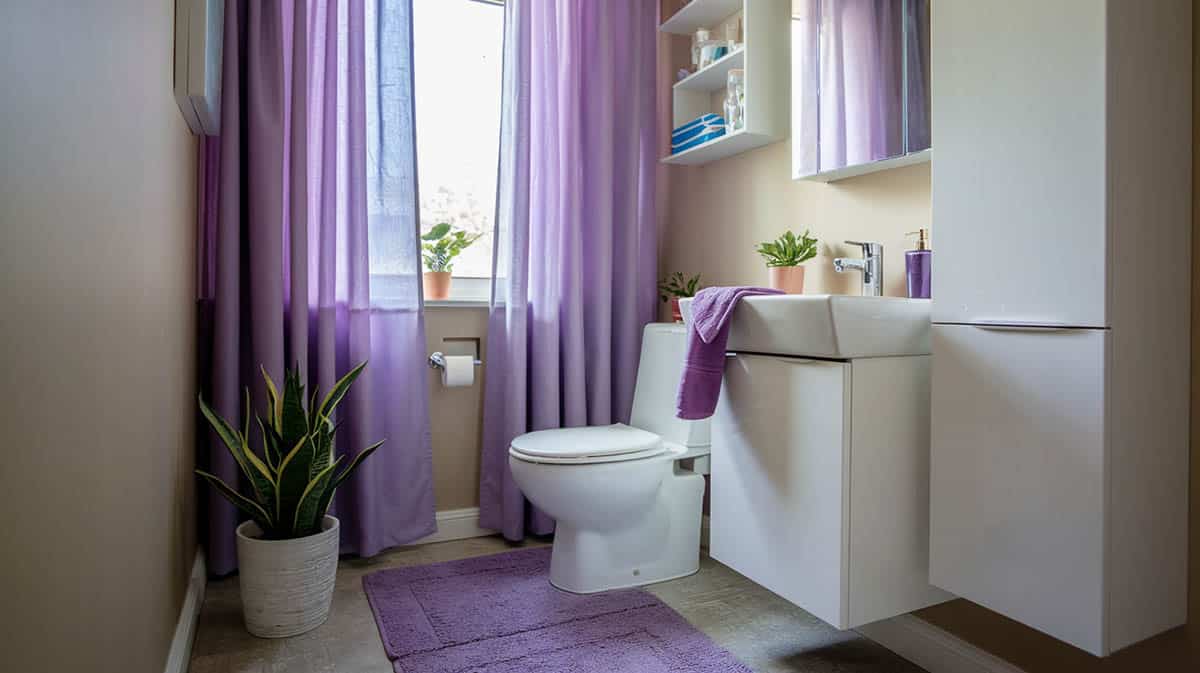
Sophisticated Neutral Options
I like to use neutral curtain colors when I want to infuse a sense of sophistication without taking all of the attention. These options pair sophistication and functionality and work across various design styles.
| Curtain Color | Matching Wall Paint Colors |
|---|---|
| Griege | Warm or cool neutrals |
| Pearl | Pastel or metallic accents |
| Champagne | Soft golds or neutrals |
| Dove Gray | White or light wood tones |
| Stone | Beige, tan, or natural wood colors |
| Sand | Beach-inspired blues or neutrals |
| Taupe | Gray or neutral tones |
| Mushroom | Earthy tones or muted colors |
| Ecru | Soft pastels or jewel tones |
| Cloud Gray | Scandinavian whites or pale blues |
| Linen | Neutral or organic hues |
Griege – With its blend of gray and beige, a greige tone can match both cool and warm color themes. It has versatility and is subdued enough to make it an excellent backdrop to highlight other decorative elements. It works especially well with modern farmhouse, transitional, or contemporary designs.
Pearl – Use pearl hues to reflect light beautifully since it has a soft shimmery finish. They pair with both metallic and pastel accents to give an elegant feel. The tone adds brightness without appearing too stark. Use pearl hues for styles like Hollywood Regency, French country, or modern glam.
Champagne – For a dose of quiet glamour, try champagne tones. The golden hue complements wood furnishings and metallic finishes. Champagne looks similar to sunlight filtering through a room without overpowering the refined feel. Try them for designs like art deco, traditional, or luxe contemporary rooms.
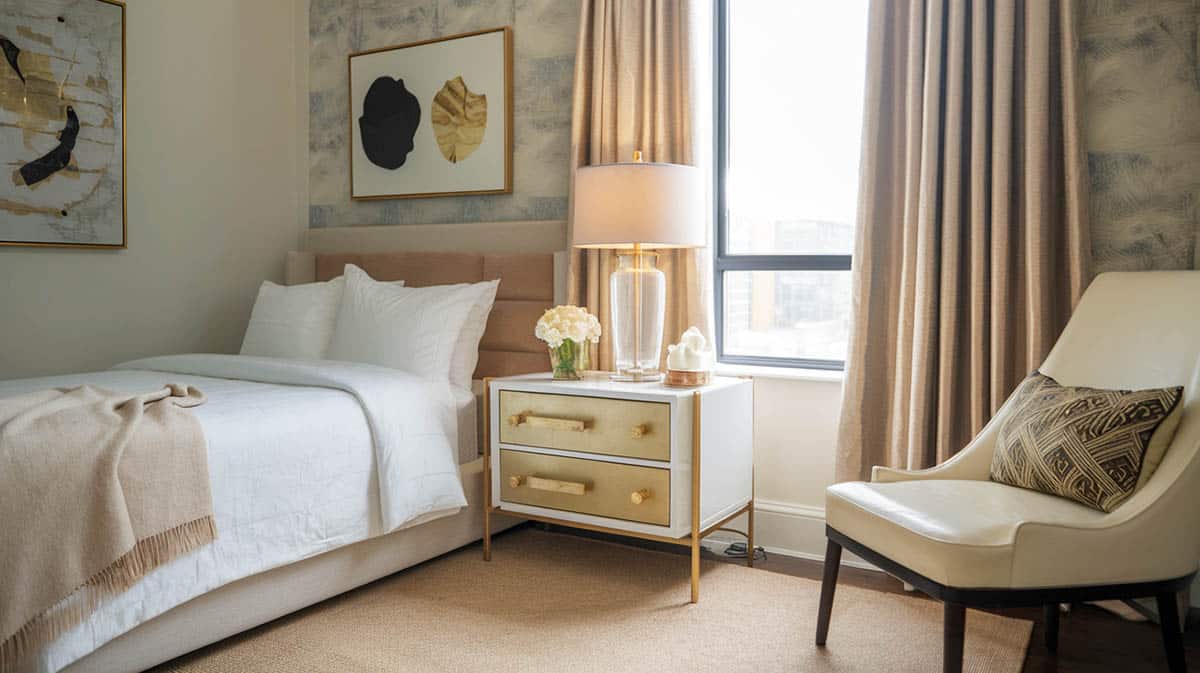
Dove gray – For a sleek and modern aesthetic, consider a dove-gray. The soft, muted color enhances brightness from windows while preventing a flat or monotonous look. Pair dove gray with white walls or natural wood furniture for a balanced, minimalist style. The tone works well for modern rustic, Mediterranean, and coastal designs.
Stone – For a more grounded, natural feel, consider stone-colored curtains. Ranging from beige to tan, this earthy tone complements wood furnishings and leafy plants. The warmth of this hue works well in rustic, bohemian, coastal, or cottage-style decors.
Sand – Sand-colored window treatments are a versatile neutral option that evokes a sunny, beach-inspired mood while matching both vibrant and subdued color schemes. The hue can promote the feel of coastal, modern desert, or contemporary beach vibes.
Taupe – A sophisticated taupe adds a touch of cozy drama through its blend of gray and brown tones. The subtle depth flatters rooms where a neutral scheme is preferred, but needs some extra warmth. Use this tone in modern, transitional, or urban spaces.
Mushroom – For small spaces with a more modern or natural aesthetic, a mushroom hue may be ideal. Ranging from soft brown to pale beige, these tones feel organic yet refined. This muted neutral works beautifully in bohemian, modern and Japandi spaces, to add a touch of elegance to casual décor.
Ecru – The slight creamy quality of ecru gives this pale beige both softness and timeless appeal. Ecru enhances small spaces through its ability to brighten while still retaining a neutral identity. Traditional and contemporary rooms benefit from its versatility, complementing color schemes from pastel to jewel-tone.
Cloud gray – This subtle, silvery tone is practically made for smaller layouts. The delicate cool undertones give off an airy, modern Scandinavian or minimal feel that can really enhance the light.
Linen – Another gorgeous neutral option is linen with its natural, textured beige-gray shade. It oozes laidback sophistication and is perfect for pairing with jute rugs, wicker chairs, and other organic materials. Linen-colored curtains can give a cozy, textural look to a room while still feeling fresh and open. Use it with a modern farmhouse, casual coastal, or modern designed area.
Designing tips. Playing around with fabrics that enhance light and texture can create another layer of depth beyond the color alone. I suggest considering materials with a soft glow or sheen to them that can reflect light for a more open and airy feel.
Some go-to fabric options are linens, silks, and finely woven cottons. You should test out samples during the day and night to see how the fabric interacts with the sunlight from your windows, and any lamps or overhead lighting you use. Don’t be afraid to add some subtle patterning either. A light bouclé, herringbone, or geometric pattern can give just enough visual interest without overdoing it.
Bold Colors That Work in Small Rooms
Small spaces can take on a whole new personality with the right bold curtain colors. Vibrant hues like navy blue, emerald green, and plum add drama without overwhelming. When thoughtfully incorporated, these rich colors create focal points that elevate your decor.
| Curtain Color | Matching Wall Paint Colors |
|---|---|
| Navy Blue | Light neutrals or metallic accents |
| Emerald Green | Soft grays or natural wood |
| Plum | Ivory or soft taupe |
| Charcoal Gray | Blush tones or warm metallics |
| Rust | Olive greens or warm creams |
| Burgundy | Neutral grays or beiges |
| Teal | Bright whites or natural wood |
| Mustard | Crisp white or navy accents |
Navy blue – For a timeless, striking choice that makes small rooms feel deeper, a navy blue might be what you want. The rich elegance plays well against light walls, contrasting without feeling cramped. Pair navy curtains with metallic accents like brass for sophisticated flair.
Emerald green – To energetically enhance smaller spaces, use an emerald green for a vibrant, yet refined vibe. The color beautifully complements natural wood and leather, ideal for living areas or offices. Keep the look balanced by combining emerald with soft wall colors like pale grays. Sprinkle in green accents for a pulled-together aesthetic.
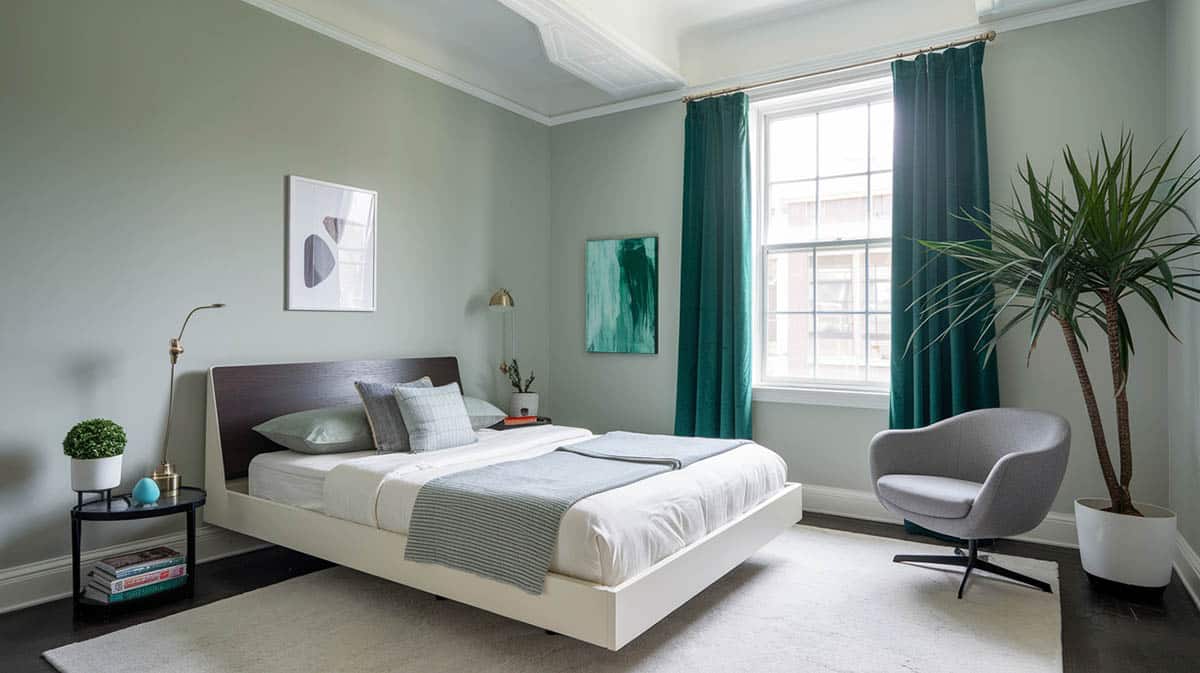
Plum – This unlikely hue exudes sophistication, and is an intense yet luxe shade that elevates compact floor plans or dining nooks. Purple undertones provide depth without dominating space. Soften plum with neutral ivories or taupe for warmth. Or heighten the drama by matching with metallics for show-stopping glam.
Charcoal gray – For a sleek, modern contrast against crisp white walls you can use a charcoal gray. If they appear too dark they can be softened with warm metallics and blush tones. Textured charcoal fabrics like velvet and linen add striking visual dimension.
Rust – For those desiring a cozy, earthy feel, rust-colored curtains paired with olive greens, creams, or wood finishes create a harmonious, grounded look perfect for living rooms or bedrooms.
Burgundy – Seeking timeless sophistication? Burgundy curtains infuse spaces like dining areas with intimacy. Allow deep burgundy hues to pop against neutral backdrops like beige, gray or taupe.
Teal – For a versatile choice that strikes the ideal balance of being bold yet soothing a teal works well for those who want to inject some personality into their design. With its rich blue-green tones, teal adds depth and personality while still feeling crisp and refreshing. Whether hung in a bedroom, home office, or living room, teal curtains complement light grays, bright whites, and natural wood tones nicely.
Mustard – For a splash of cheerful, retro-inspired color, go for mustard yellow curtains. This sunny, golden tone instantly brightens up any small space with its warmth and vibrancy. Mustard plays well with charcoal grays, crisp navies, or clean whites without clashing. It has a cozy charm that keeps the mood light.
Designing tips. When using bold tones the key is balance. Use those scene-stealing curtains as the main color focal point, then ground them with plenty of neutral tones in your furniture, walls, and decor. Sticking to a neutral foundation keeps the bold color from becoming overwhelming. For best effect, make sure your space is brightly lit, either with ample sunshine streaming into the windows or using artificial task and ambient lighting to avoid making your vibrant hue look dark and dramatic (unless that’s the vibe you’re going for!).
Now for the fun part – accessorizing. Tie everything together by layering in accents around the room that pick up the color from your curtains. Scatter some punchy toss pillows on your couch or chairs that match or coordinate. Roll out a rug that has a shot of your chosen color woven through it. Display some vibrant art or objets d’art atop neutral shelves or tabletops. The goal is to echo that bold shade throughout the space for maximum impact.
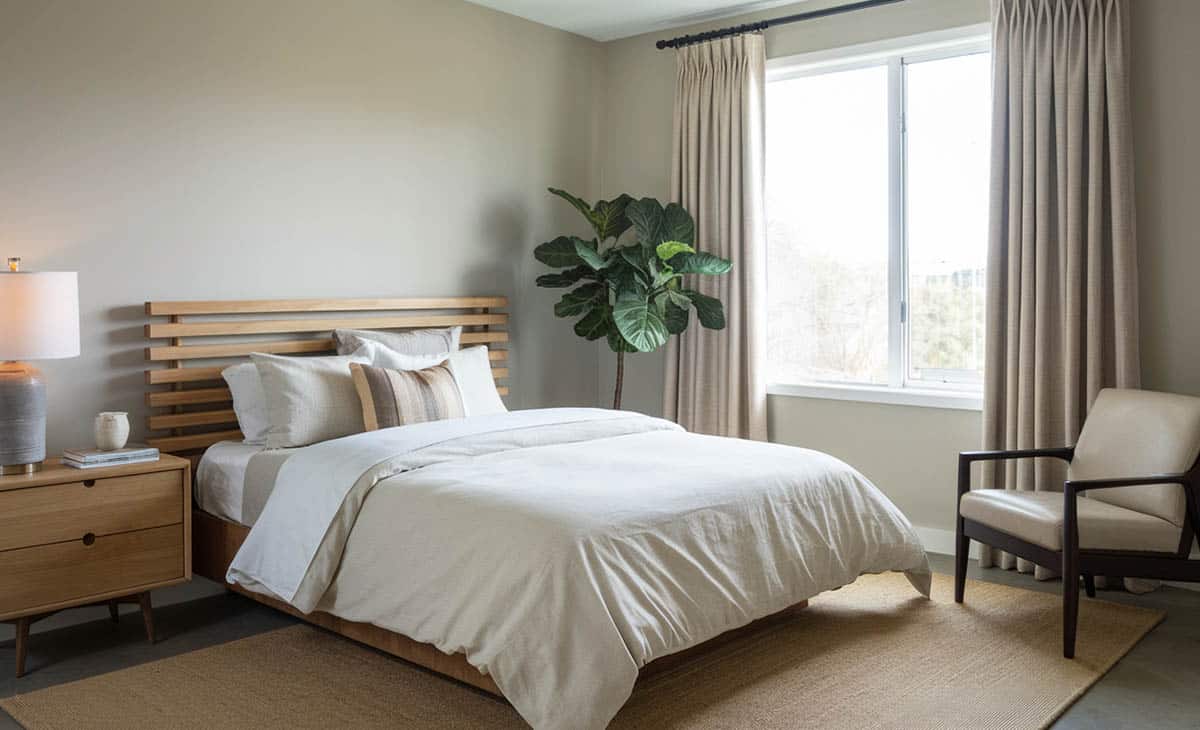
Making a Small Space Feel Bigger with Curtain Color
When it comes to choosing the colors for curtains in specific compact rooms there are some recommended options that tend to work best. Here’s a few of our picks for each room.
- Kitchen. The best hues for curtains are crisp whites, pastels like mint, butter, or soft blue.
- Bedroom. Go with lavender or light blue, pale gray or neutral like ivory, cream or taupe for excellent results.
- Bathroom. A sheer white, light gray, ecru or sand all work well with the tones often found in bathrooms. Pastels like blush pink or soft aqua can lend a touch of vibrancy without being overpowering.
- Living room. Crisp white, ivory, greige or dove gray are all versatile options. For a bolder tone use teal or rust window treatments.
- Home office. For an elegant look go with a pearl or champagne tone. Use pale gray or mushroom for a more calming feel.
- Playroom. To promote a feeling of playful energy go with a butter yellow or mint green. to calm things down a notch try lavender or light blue.
- Dining Room. Neutrals like greige or taupe work well here. Up the warmth with sand of champagne tones. For a sophisticated feel use a burgundy or plum.
So which color strategies and patterns visually expand a small space? Here’s a few ways to choose…
Match them. One of the easiest ways to make a smaller room look larger is to match curtains with a closely similar wall color. I’m not talking a perfect match like your button-down and flannel PJ pants. More like complement each other. This creates a smooth, seamless look instead of a choppy, disjointed one.
Some stylish combinations:
- Light walls and curtains = for example, pale gray walls with matching curtains to enhance airy, expansive loft vibes.
- Dark painted walls and matching curtains = for example navy blue or charcoal walls with similar curtains equals moody hygge heaven (With one caveat – adequate natural or artificial lighting.)
Pro tip: layer on texture with nubby or velvety fabrics so the look doesn’t fall flat.
Vertical stripes. When designing a small space, consider using vertically striped curtains or upholstery. The long, continuous lines running floor to ceiling create an elongating effect that tricks the eye, making rooms feel taller and more spacious.
Vertical stripes work particularly well in rooms challenged by low ceilings, drawing the gaze upwards and opening up the space. The repeating pattern also brings a subtle order and balance to compact areas like a closet, guest bath or laundry that can feel cluttered or claustrophobic.
Ombré effects. The dreamy color gradients of Ombré go from light to dark (or vice versa) and just do something special to add visual appeal. As the shades shift across the length of the curtains, your eyes follow, creating a sense of depth to make everything feel more expansive.
Depending on the ombré palette you choose, the vibe can be totally transformed. Go for a white to blush pink situation and you’ve instantly got a heavenly glow. The space feels airier and brighter. Opting for a bold navy to a pale blue gradient and you’ve got a grounded yet serene backdrop.
Sheers. For a timeless pick that allows plenty of natural light the semi-transparent sheer fabric is a good choice at the expense of privacy. They work especially well when layered with other thicker fabrics that can be pulled back whenever they’re not needed. If you’re working in a room that doesn’t get much sunlight, sheers are the perfect solution.
Layer them with other window treatments like bold patterned curtains or insulating solid panels and you can control both light levels and privacy. I’m a big fan of neutral toned sheers in soft whites, ivories or grays – they diffuse light beautifully without sacrificing that breezy, carefree vibe.
Beyond the functional benefits, don’t underestimate the psychological impact sheers can have. Unlike opaque curtains that can make small spaces feel cramped or cave-like, the transparency conveys a sense of freedom and breathability. The simplicity of the flowing fabric also lends a serene, minimalist aesthetic, perfect for cozy hideaways or sleek designs.
When tackling window treatments in your home, keep all these tips in mind. Thoughtfully pairing sheers with other elements like matching wall colors, vertical stripes, ombré effects and layered looks can completely transform even the tiniest room into a stylish, spacious oasis. A strategic eye and some creativity with curtains can work magic!

